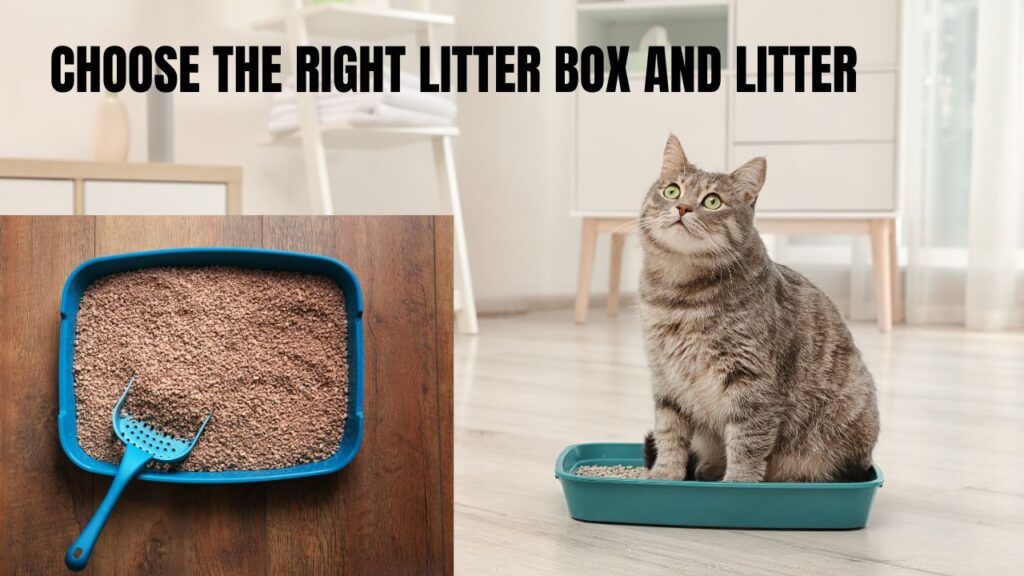Contents
Let’s Talk About Litter Boxes
Let’s face it—teaching a cat to use a litter box is one of the first things you’ll have to do when you bring a new kitten or cat into your home. It’s a bit of a no-brainer, right? You expect your feline friend to know exactly what to do. After all, cats are pretty self-sufficient creatures, aren’t they?
.But here’s the catch: while many cats seem to instinctively know how to use a litter box, others might need a little help. Whether you’ve just adopted a kitten or you’re facing litter box issues with an older cat, understanding how to train a cat for the litter box is crucial to a smooth and happy relationship with your pet. It’s not just about avoiding accidents (though that’s a big part of it). It’s about making sure your cat feels comfortable, confident, and safe while using their litter box.
So, whether you’re starting from scratch or troubleshooting some litter box struggles, this comprehensive guide will take you step-by-step through the process. By the end, you’ll be a pro at teaching your cat the ins and outs of proper litter box habits.
Why Litter Box Training Is So Important
Before we dive into the details of how to train your cat for the litter box, let’s quickly review why this is such an essential skill. You’re probably already aware of the basics, but a little refresher never hurts!
The Benefits of Litter Box Training Your Cat
- A Clean Home: A litter box is a sanitary way for your cat to relieve themselves indoors. It’s much cleaner (and more acceptable to your guests) than if they were to go anywhere else in the house!
- Prevents Accidents: If your cat doesn’t understand how to use the litter box, they might go to the bathroom in places you’d rather they didn’t—like your favorite rug or under the bed. Litter box training keeps your home accident-free.
- Good Health: Knowing where your cat’s waste is going helps you keep track of their health. Any changes in their litter habits (such as avoiding the box) might signal health problems, which means you can catch potential issues early.
- Happier Cat: Cats are creatures of habit, and having a designated place to do their business can give them a sense of security. A consistent routine helps reduce stress for both you and your cat.
Step-by-Step Guide: How to Train a Cat for the Litter Box
Now that you know why litter box training is so important, let’s talk about how to actually do it. Don’t worry—training your cat to use a litter box isn’t rocket science, but there are a few important steps to follow. The good news? Most cats are pretty smart and catch on quickly if you approach the process with patience and consistency.

Step 1: Choose the Right Litter Box and Litter
Before you can start the training process, you need to make sure you have the right setup. Here are some tips on choosing the right litter box and litter:
- Size: Make sure the litter box is big enough for your cat to comfortably enter, turn around in, and dig. A small box will be uncomfortable, and your cat may avoid it. If you have a kitten, you can start with a smaller box but expect to upgrade as they grow.
- Open vs. Covered: Some cats prefer an open box, while others feel more secure with a covered one. Experiment to see which your cat prefers. If you’re adopting a kitten, they may feel safer in an open box at first.
- Litter Type: Cats can be picky about litter. Some prefer clumping, while others don’t mind non-clumping varieties. Try a few different types (e.g., clumping, crystal, or natural options) and observe which your cat seems to prefer. Avoid using scented litter, as many cats find it off-putting.
Litter Box Setup Dos and Don’ts
| Dos | Don’ts |
|---|---|
| Choose a box that’s easy for your cat to enter | Avoid using boxes that are too small |
| Keep the box clean (scooping daily) | Don’t use overly fragrant litter |
| Place the box in a quiet, accessible location | Don’t put the box near food or water bowls |
| Use litter your cat prefers | Avoid changing litter types too often |
Step 2: Introduce Your Cat to the Litter Box
Once you’ve got the perfect litter box and litter, it’s time to introduce it to your cat. If you’ve just adopted a kitten or a cat, they may already have some idea of what to do. But don’t assume they automatically know where the box is. Here’s how to help them get started:
- Place the Litter Box in a Quiet Spot: The location of the litter box is crucial. It should be in a low-traffic area that’s easy for your cat to access but not too close to their food or water dishes. Cats like privacy when doing their business, so don’t place the box in a loud or busy area of the house.
- Show Your Cat the Box: If your cat is new to the concept of a litter box, gently place them in the box after meals, naps, or whenever they wake up. These are times when cats are most likely to need to relieve themselves. Gently place their paws in the litter to get them familiar with the sensation.
- Let Them Explore: Some cats will figure it out on their own, while others might need a little more help. Let your cat explore the box and see if they naturally start to dig or settle into it. It may take a few tries, and that’s okay.
Step 3: Positive Reinforcement for Good Behavior
If your cat uses the litter box correctly, be sure to reward them with praise and a treat. Positive reinforcement is key to helping them understand what behavior you’re expecting. Cats, like many animals, respond well to rewards. Here’s how to reinforce their good habits:
- Praise: Use a calm, soothing voice to praise your cat when they use the box. A simple “Good job!” goes a long way.
- Treats: Give them a small treat after each successful visit to the litter box. This helps them associate the box with something positive.

Step 4: Troubleshooting Common Litter Box Issues
Not all cats will immediately get the hang of the litter box, and some might have accidents. If you’re experiencing issues, try these troubleshooting tips:
- Accidents Outside the Box: If your cat is peeing or pooping outside the box, first check for any potential medical issues (e.g., urinary tract infections). If they’re healthy, it might just be a matter of the litter box being in the wrong location or being too dirty. Cats are clean animals and won’t use a dirty box.
- Litter Box Aversion: Some cats refuse to use a litter box for reasons like the type of litter, box size, or location. Experiment with different setups until you find one that works for them.
- Behavioral Issues: If your cat is consistently avoiding the box, it could be due to stress, a change in routine, or a bad experience. Spend time with them, try to reduce stress in their environment, and be patient.
Common Litter Box Problems and Solutions
| Problem | Solution |
|---|---|
| Cat refuses to use the box | Try a different type of litter or box location |
| Litter box accidents outside the box | Check for medical issues or stress factors |
| Box is too small or hard to access | Use a larger, more accessible box |
| Cat doesn’t like the litter | Experiment with different litter types |
Conclusion: Patience Is Key
Training your cat to use the litter box is one of the easiest and most essential things you can do as a cat parent. With patience, consistency, and a little trial and error, your cat will be using their litter box like a pro in no time. Remember, every cat is different—some will pick it up immediately, while others might take a little longer. The key is to be patient and always offer positive reinforcement.
So, the next time you see your cat confidently strut to the litter box and do their business, you can feel proud knowing you’ve helped them build a good habit. And hey, your home will thank you, too!

